 |
|
|
| (Information by Peter Kessler, with additional information from The New Islamic Dynasties: A Chronological and Genealogical Manual, C E Bosworth (2004), from Historical Dictionary of Argentina, Ione S Wright and Lisa M Nekhom (1978), from Colonial Latin America, Mark A Burkholder & Lyman L Johnson (Tenth Edition, Oxford University Press, 2018), from The New Islamic Dynasties: A Chronological and Genealogical Manual, C E Bosworth (2004), and from External Links: BBC Country Profiles, and Encyclopaedia Britannica, and Explore Asuncion (Trip Advisor), and Welcome Uruguay.) |
|
|
| 1529 - 1534 |
Pedro de Mendoza offers to explore South America at his own expense in 1529, intending to found colonies there. In 1534 his offer is accepted and this conquistador is made the first governor of New Andalusia. This revives a title which had previously existed between 1501-1513, centred largely on what is now Venezuela - or at least its coastal strip. That had been absorbed into the Spanish settlement region of Castilla de Oro from its official incorporation in 1513 (roughly northern Columbia and western Venezuela), only to be downgraded with the creation of the Spanish Colonial province of Nicaragua in 1524. 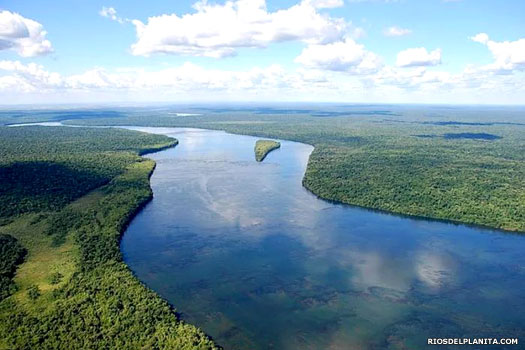 The Rio de la Plata (River Plate, or 'river of silver') was first colonised by Europeans in 1536 with the founding of the settlement of Buenos Aires following an unsuccessful exploratory visit in 1516 The Rio de la Plata (River Plate, or 'river of silver') was first colonised by Europeans in 1536 with the founding of the settlement of Buenos Aires following an unsuccessful exploratory visit in 1516 |
|
| 1534 - 1537 |
Pedro de Mendoza |
First governor and captain general of New Andalusia. |
| 1536 - 1537 |
Pedro de Mendoza founds the colony of Buenos Aires in 1536, far to the south of his governorship of New Andalusia - although at this stage of Spanish Colonial development all land is up for grabs and organisation into official territories is frequently changing. The Spanish encounter the Querandí natives and soon begin to take advantage of them, earning their enmity. Disappointed with the poor progress on the colony, Pedro de Mendoza sets sail for Spain, promising to send reinforcements. He dies during the voyage, while in 1537 the settlement region of Castilla de Oro is divided up between fresh colonial creations. |
|
| 1537 - 1539 |
Juan de Ayolas |
Governor of New Andalusia. Killed by Payagua natives. |
| 1539 - 1541 |
Domingo Martinez de Irala |
Acting governor of New Andalusia. |
| 1541 |
The colony of Buenos Aires is abandoned due to the many difficulties being faced there, not least of these being a coalition of native tribes which has been formed against them as a result of a Spanish attack on them in 1536. The colonists move to Asunción, now the capital city of Paraguay. 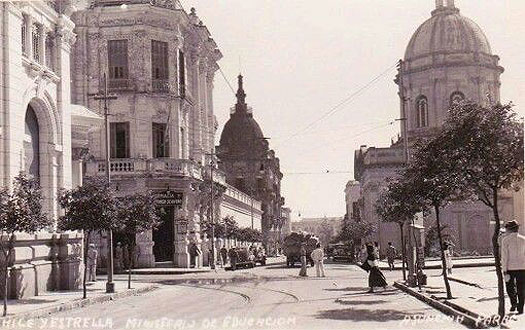 Asunción, the 'Mother of Cities', was founded in 1537, declaring independence from Spain in 1811 and honing its position as the gateway to the grassy Gran Chaco region Asunción, the 'Mother of Cities', was founded in 1537, declaring independence from Spain in 1811 and honing its position as the gateway to the grassy Gran Chaco region |
|
| 1541 - 1544 |
Alvar Nunez Cabeza de Vaca |
Governor of New Andalusia. |
| 1544 |
The Spanish Colonial governate of New Andalusia is renamed. Initially covering a wide east-west band of South America from coast to coast, with Buenos Aires at its southern border with New Leon, subsequent land grants have forced New Andalusia to concentrate its colonisation efforts along the Rio de la Plata. The greatest of those grants is the creation of the viceroyalty of Peru in 1542 which initially controls almost all of central and western South America (including New Andalusia). With that in mind, the governate of Andalusia's new name is Rio de la Plata. |
|
| 1544 - 1556 |
Domingo Martinez de Irala |
Former acting governor. Now governor of Rio de la Plata. |
| 1556 |
During his period as acting governor of New Andalusia and then as governor of the newly-created governate of Rio de la Plata, Domingo Martinez de Irala has forcibly ensured the construction of new towns, forts, and churches, while subjugating the recalcitrant native population and ensuring the survival of the colony. 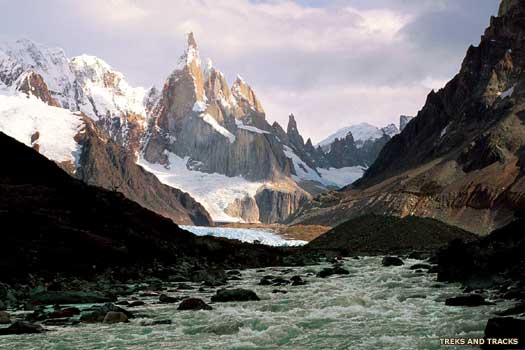 The southernmost tip of both Argentina and Chile, Patagonia was first explored by Europeans in 1520, but witnessed little serious examination until the eighteenth century The southernmost tip of both Argentina and Chile, Patagonia was first explored by Europeans in 1520, but witnessed little serious examination until the eighteenth century |
|
| 1556 - 1558 |
Gonzalo de Mendoza |
Conquistador. Governor at Asunción (Paraguay). |
| 1558 - 1569 |
Francisco Ortiz de Vergara |
Conquistador. Governor at Asunción (Paraguay). |
| 1569 - 1572 |
Felipe de Caceres |
Conquistador. Arrested and sent to Spain for trial. |
| 1572 - 1575 |
Juan Ortiz de Zárate |
Died. Succeeded briefly by son-in-law and then nephew. |
| 1576 - 1578 |
Diego Ortiz de Zárate |
Nephew and acting governor. |
| 1578 - 1583 |
Juan de Garay |
Related to the de Zárate family. |
| 1580 |
Having already founded two successful colonial settlements, using a sense of tact and diplomacy with the natives which few others of his generation seem to possess, Governor Juan de Garay now re-founds the colony of Buenos Aires, on 11 June 1580. The settlement will become the region's most important port. 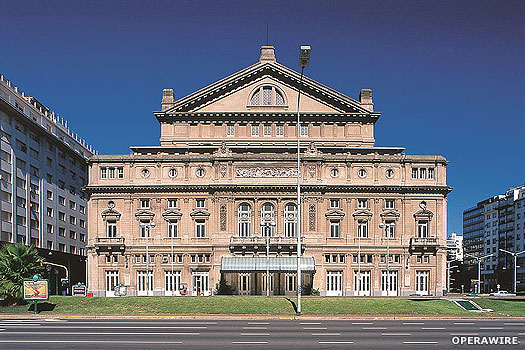 The Teatro Colón opera theatre in Buenos Aires first opened its doors in 1908, replacing an 1857 building, and has since been rated as one of the world's best opera houses The Teatro Colón opera theatre in Buenos Aires first opened its doors in 1908, replacing an 1857 building, and has since been rated as one of the world's best opera houses |
|
| 1583 - 1587 |
Alonso de Vera y Aragon |
De facto governor until 1592 from Asunción (Paraguay). |
| 1587 - 1592 |
Juan Torres de Vera y Aragon |
Son-in-law of Juan Ortiz de Zárate. |
| 1592 - 1594 |
Hernando Arias de Saavedra |
Conquistador. First governor of Rio de la Plata & Paraguay. |
| 1594 - 1595 |
Fernando de Zárate |
Conquistador. |
| 1596 - 1597 |
Juan Ramírez de Velasco |
Conquistador. Died shortly after being succeeded in office. |
| 1597 - 1599 |
Hernando Arias de Saavedra |
Second term of office. Son-in-law of Juan de Garay. |
| 1599 - 1600 |
Diego Rodríguez de Valdes y de la Banda |
Conquistador. |
| 1600 - 1602 |
Frances de Beaumont |
Appointment confirmed in 1601. |
| 1602 - 1609 |
Hernando Arias de Saavedra |
Third term of office. Now restricted the slave trade. |
| 1607 |
Not one but two Spanish ships anchored near the shore at Buenos Aires are captured by English privateers. Hernando Arias de Saavedra orders that a larger fort replace the existing one, being built at the mouth of the River Matanza. 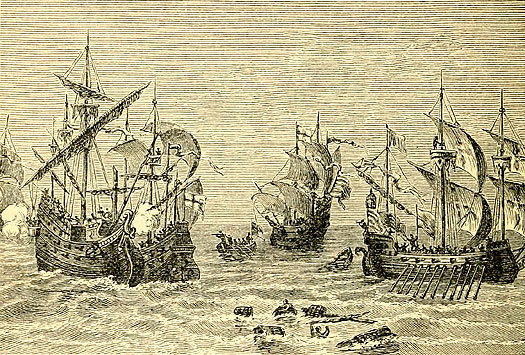 Throughout the seventeenth century Spanish ships would face increasing perils on an ocean which they had almost owned in the early sixteenth century, especially from rival English and Portuguese vessels Throughout the seventeenth century Spanish ships would face increasing perils on an ocean which they had almost owned in the early sixteenth century, especially from rival English and Portuguese vessels |
|
| 1609 - 1613 |
Diego Martin de Negron |
Conquistador. |
| 1613 - 1615 |
Mateo Leal de Ayala |
Conquistador. Later mayor of Buenos Aires. |
| 1615 - 1618 |
Hernando Arias de Saavedra |
Fourth term of office. Died in retirement in 1634. |
| 1617 - 1620 |
The Spanish viceroy of Peru, Francisco de Borja y Aragon, divides the government of Rio de la Plata in two in 1617, creating Buenos Aires and Paraguay, both of which remain dependencies of Peru. The idea to divide the existing governate had been devised by Hernando Arias de Saavedra, but it requires royal confirmation (which it receives in 1618) before it can be officially enacted in 1620. |
|
| 1618 - 1623 |
Diego de Gongora |
Conquistador. Governed Paraguay only until 1620. |
| 1623 - 1631 |
Francisco de Cespedes |
Subdued the Charrúa people of Uruguay. |
| 1624 |
The first permanent settlement is founded in the Eastern Strip (Uruguay), at Villa Soriano on the north bank of the Rio de la Plata and some way upriver from Buenos Aires. Governor Francisco de Cespedes of Rio de la Plata continues ongoing efforts to pacify the native Charrúa people of the region, still barely touched or even intruded upon by the Spanish settlers. 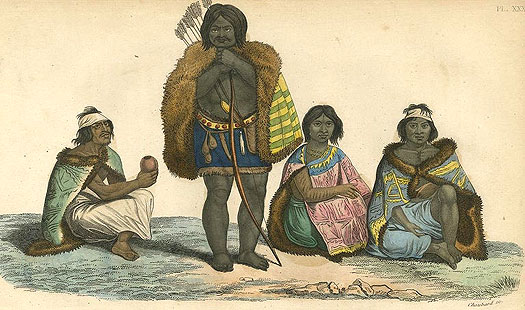 The native Charrúa people were depicted in 1843 by J C Prichard in the publication Histoire Naturelle de l'Homme: Comprenant des recherches sur L'influence des agens physiques et morau (Natural History of Man: Including research on the influence of physical and moral agents) The native Charrúa people were depicted in 1843 by J C Prichard in the publication Histoire Naturelle de l'Homme: Comprenant des recherches sur L'influence des agens physiques et morau (Natural History of Man: Including research on the influence of physical and moral agents) |
|
| 1631 - 1637 |
Pedro Esteban Davila |
Conquistador. |
| 1637 - 1641 |
Mendo de la Cueva y Benavidez |
Conquistador. |
| 1641 |
Andres de Sandoval |
Interim governor. |
| 1641 - 1645 |
Luis Jeronimo Fernandez de Cabrera |
Former viceroy of Peru (1629). |
| 1645 - 1653 |
Jacinto Lariz |
Conquistador. |
| 1653 - 1660 |
Pedro Baigorri Ruiz |
Conquistador. |
| 1660 - 1663 |
Alonso Mercado y Villacorta |
Previously & subsequently governor of Tucumán. |
| 1663 - 1674 |
Juan Martinez de Salazar |
Conquistador. |
| 1674 - 1678 |
Andres de Robles |
Conquistador. |
| 1678 - 1682 |
Jose de Garro |
Conquistador. Later governor ofChile (1682). |
| 1680 |
[ Portuguese](../KingListsEurope/IberiaPortugal.htm#Kingdom of Braganza) settlers from Brazil build a fort at Colonia del Sacramento in Uruguay. The move causes the Spanish administration to increase its own interest in the area, as it seeks to limit the expansion of Brazil. Garro launches a surprise attack on the fort which captures it in 1680, but it is returned by royal decree to the Portuguese in 1681 as the attack had been undertaken without royal permission. 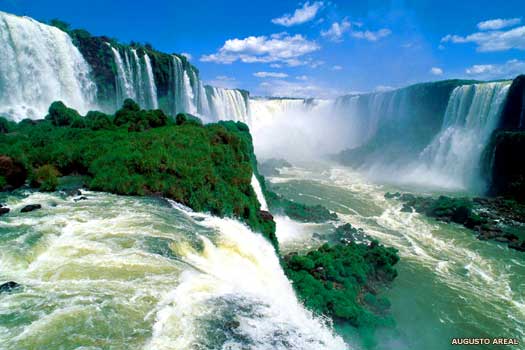 Pedro Alvares Cabral found a rich and sometimes dangerous land which was ripe for colonisation - this would become the Portuguese imperial colony of Brazil Pedro Alvares Cabral found a rich and sometimes dangerous land which was ripe for colonisation - this would become the Portuguese imperial colony of Brazil |
|
| 1682 - 1691 |
Jose de Herrera y Sotomayor |
Governor ('conquistador' becoming outdated). |
| 1690 |
The Falkland Islands, sighted in 1520 by Ferdinand Magellan but never set foot upon, is now explored by British naval Captain John Strong. He names the islands after Viscount Falkland, his patron, who shortly afterwards becomes 'First Lord of the Admiralty'. |
|
| 1691 - 1698 |
Agustin de Robles |
Governor. |
| 1698 - 1701 |
Manuel de Prado y Maldonado |
Governor. |
| 1701 - 1707 |
Antonio Juan de Valdes y Inclan |
Governor. Defeated [ Portugal](../KingListsEurope/IberiaPortugal.htm#Kingdom of Braganza) at Colonia del Sacramento. |
| 1702 - 1715 |
Spain is involved in the War of the Spanish Succession as [ Austria](../KingListsEurope/GermanyAustria.htm#Habsburg Archdukes), Britain, and [ Portugal](../KingListsEurope/IberiaPortugal.htm#Kingdom of Braganza) dispute the Bourbon accession. As part of that war, Governor Antonio Juan de Valdes y Inclan besieges the growing Portuguese settlement at Colonia del Sacramento. In 1705, defeated, the Portuguese are evacuated - troops, civilians, and all their possessions. 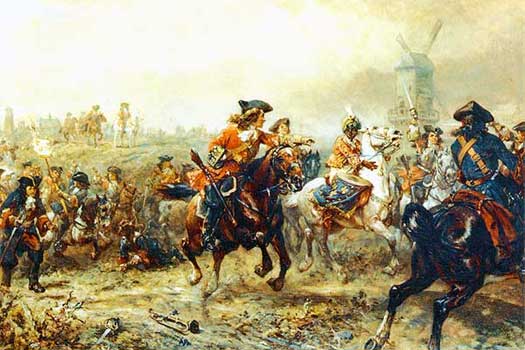 The War of the Spanish Succession was fought to avoid a shift in the balance of power in Europe with the proposed unification of the Bourbon kingdoms of Spain and France The War of the Spanish Succession was fought to avoid a shift in the balance of power in Europe with the proposed unification of the Bourbon kingdoms of Spain and France |
|
| 1708 |
Manuel de Velasco y Tejada |
Purchased the office and was arrested. |
| 1708 - 1714 |
Juan Jose de Mutiloa |
Governor. |
| 1713 |
The Treaty of Utrecht which concludes the War of the Spanish Succession sees the former [ Portuguese](../KingListsEurope/IberiaPortugal.htm#Kingdom of Braganza) settlement of Colonia del Sacramento handed back. A fresh influx of settlers arrives there from Brazil. The colony subsequently changes hands many times. |
|
| 1714 |
Alonso de Arce y Soria |
Purchased the office and died 5 months later. |
| 1714 - 1715 |
Jose Bermudez de Castro |
Sergeant-major and interim governor. |
| 1715 - 1717 |
Baltasar Garcia Ros |
Subsequently lieutenant-governor under Zavala. |
| 1717 - 1734 |
Bruno Mauricio de Zavala |
Founded Montevideo. |
| 1724 |
Governor Bruno Mauricio de Zavala founds a fortress which forms the basis for the later development of Montevideo. In this period it is purely a military stronghold, with de Zavala feeling that it is required in order to hold back [ Portuguese](../KingListsEurope/IberiaPortugal.htm#Kingdom of Braganza) encroachment from Brazil. In time it becomes the capital of the independent republic of Uruguay. 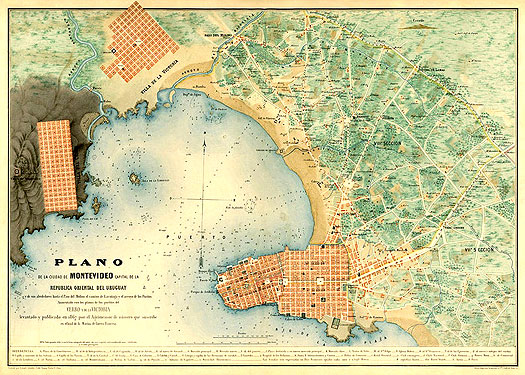 The city of Montevideo was founded between 1724 and 1726 by Bruno Mauricio de Zabala, a port city by nature which faces the Río de la Plata and which today consists of tree covered avenues, quiet neighbourhood streets, and green squares and parks The city of Montevideo was founded between 1724 and 1726 by Bruno Mauricio de Zabala, a port city by nature which faces the Río de la Plata and which today consists of tree covered avenues, quiet neighbourhood streets, and green squares and parks |
|
| 1734 - 1742 |
Miguel de Salcedo y Sierraalta |
Governor. |
| 1742 - 1745 |
Domingo Ortiz de Rozas |
Governor. |
| 1745 - 1756 |
Jose de Andonaegui |
Governor. |
| 1756 - 1766 |
Pedro Antonio de Ceballos Cortes |
Later the first viceroy of Rio de la Plata. |
| 1764 - 1774 |
A small French colony named Port Louis is established on East Falkland in 1764. The sizeable number of Bretons in the colony refer to the islands as a whole as Îles Malouines, from which the Spanish version is later produced - Islas Malvinas. The colony is handed to the Spanish three years later. A British expedition reaches Port Egmont in West Falkland in 1765, and 'took formal possession of it and of "all the neighbouring islands" for King George III'. Another British expedition establishes a settlement of about a hundred people at Port Egmont in 1766 and, although it withdraws on economic grounds in 1774, 'sovereignty was never relinquished or abandoned'. 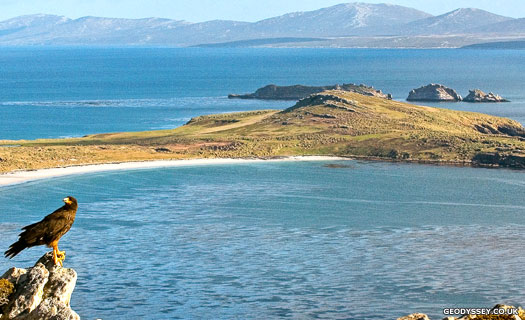 East Falkland was first settled by a short-lived Franco-Breton colony, but it was the British who populated the island in earnest, with the French Port Louis eventually being replaced as the capital by Stanley Harbour for its better anchorage East Falkland was first settled by a short-lived Franco-Breton colony, but it was the British who populated the island in earnest, with the French Port Louis eventually being replaced as the capital by Stanley Harbour for its better anchorage |
|
| 1766 - 1770 |
Francisco de Paula Bucarelli y Ursua |
Governor. |
| 1770 - 1777 |
Juan Jose de Vertiz y Salcedo |
Later the second viceroy of Rio de la Plata. |
| 1776 |
Spain is becoming increasingly concerned about the rise of rival world powers, notably the two greatest rival naval powers in the form of Great Britain and [ Portugal](../KingListsEurope/IberiaPortugal.htm#Kingdom of Braganza), both of which have an interest in the South American continent. In order to be part of addressing their security concerns, the governate of Rio de la Plata is raised in rank, removing it from the southern territories which are administered by Peru, and renaming it the viceroyalty of Rio de la Plata. It gains independent control of the provinces of Argentina, Bolivia, Chile, Paraguay, and Uruguay. |
|
|
|
|
| Viceroyalty of Rio de la Plata (River Plate) (Spanish Empire) AD 1776 - 1810 Christopher Columbus landing in the Bahamas in 1492 began a process of colonisation and empire-building on the part of a newly-unified Spain. Colonies were quickly established on Hispaniola, Cuba, and then New Spain, formed when the greatest Aztec city, Tenochtitlan, was defeated in 1521. European colonisation of central and South America could begin in earnest. The Rio de la Plata (River Plate) estuary became the border between Spain's colony of Peru, of which early Argentina was a part, and the Portuguese colony of Brazil. 'River plate' means 'river of silver' in Spanish, first being discovered by Europeans in 1516 when the Spanish navigator, Juan Diaz de Solis, was killed by the indigenous people whilst exploring there. The colony of Buenos Aires was founded in 1536. Temporarily abandoned, it was re-founded in 1580 by the then-governor of the governate of Rio de la Plata, Juan de Garay, and would go on to be one of the biggest cities in South America. Between its creation and 1776, the province of Argentina within the viceroyalty of Rio de la Plata was administered separately from the neighbouring provinces of Bolivia, Paraguay, and the 'Eastern Strip' (Uruguay). By the eighteenth century Spain had become increasingly concerned about the rise of rival world powers, especially Great Britain and Portugal, who both had an interest in the South American continent. To try and address security concerns, Rio de la Plata was raised to a viceroyalty in 1776 out of the southern territories of Peru, gaining independent control of the provinces of Argentina, Bolivia, Chile, Paraguay and Uruguay. The last such viceroyalty to be created, it quickly lost Chile, which became autonomous in 1789, and just thirty-four years after its creation it was ended by the wars of independence against Spanish Colonial control. |
|
|
 |
|
|
| (Information by Peter Kessler, with additional information from The British Invasion of the River Plate 1806-1807: How the Redcoats Were Humbled and a Nation Was Born, Ben Hughes (Pen & Sword Book Ltd, 2014), from Gobernar la Revolución: Poderes en disputa en el Río de la Plata, 1810-1816, Marcela Ternavasio (Buenos Aires, 2007), from Historical Dictionary of Argentina, Ione S Wright and Lisa M Nekhom (1978), and from External Links: BBC Country Profiles, and Encyclopaedia Britannica, and Explore Buenos Aires (Trip Advisor).) |
|
|
| 1777 - 1778 |
Pedro Antonio de Ceballos Cortes |
Previously served as governor of Rio de la Plata. |
| 1778 - 1784 |
Juan Jose de Vertiz y Salcedo |
Previously governor of Rio de la Plata. Resigned. |
| 1784 - 1789 |
Nicolas del Campo Maestre Cuesta |
A capable administrator. Expanded Buenos Aires. |
| 1789 |
Under Irish-born Captain-General Ambrosio O'Higgins the captaincy general of Chile becomes autonomous and is withdrawn from the control of the viceroyalty of Rio de la Plata. Chile is still relatively unadvanced when compared to Peru but that does not diminish the growing demands for independence from its colonial settlers. 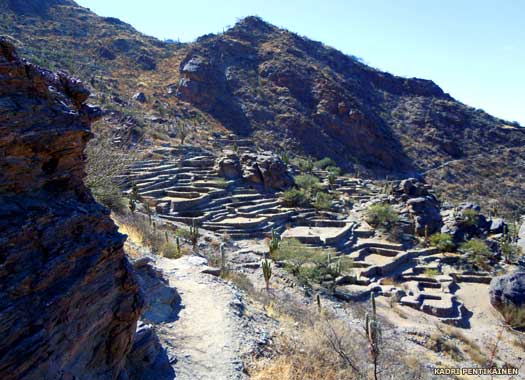 Seen here in its mountainside setting are the ruins of Quilmes, home to the native tribe in the Tucumán region which was defeated by the Spanish in the seventeenth century Seen here in its mountainside setting are the ruins of Quilmes, home to the native tribe in the Tucumán region which was defeated by the Spanish in the seventeenth century |
|
| 1789 - 1795 |
Nicolas Antonio de Arredondo |
Continued del Campo's good work before resigning. |
| 1795 - 1797 |
Pedro Melo de Portugal y Villena |
Died in office. |
| 1797 - 1799 |
Antonio Olaguer y Feliu |
Interim governor. Encouraged international trade. |
| 1799 - 1801 |
Gabriel de Aviles y Fierro |
Former governor of Chile (1796). Gained Peru (1801). |
| 1801 - 1804 |
Joaquin del Pino y Rozas |
Former governor of Chile (1799). |
| 1804 |
Jose Fernando de Abascal y Sousa |
Named viceroy but then handed Peru instead. |
| 1804 - 1807 |
Rafael de Sobremonte Nunez |
Accused of cowardice for 'fleeing' in 1806. |
| 1806 - 1807 |
Following its victory at Trafalgar, Great Britain is still at war with Spain, and as part of its military efforts British troops attempt to take Buenos Aires. Montevideo in Uruguay is occupied at the start of 1807 for several months as they prepare for the attempt on Buenos Aires, and Rafael de Sobremonte Nunez leaves the city in advance, according to his orders. That attempt is defeated and the British withdraw, boosting the self-confidence of the colony. 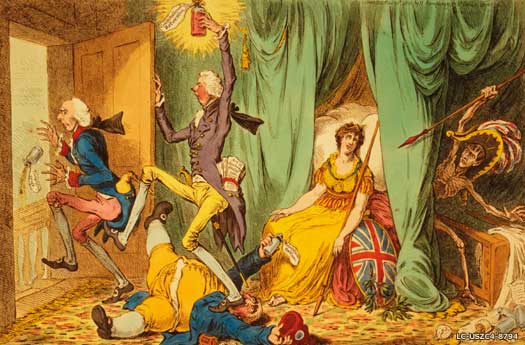 Britannia between Death and the Doctors shows an ailing Britannia being approached by Death in the guise of Napoleon, while her politicians squabble (LC-USZC4-8794) Britannia between Death and the Doctors shows an ailing Britannia being approached by Death in the guise of Napoleon, while her politicians squabble (LC-USZC4-8794) |
|
| 1807 - 1809 |
Santiago de Liniers y de Bremond |
Replaced de Sobremonte prior to Spain's confirmation. |
| 1809 - 1810 |
Baltasar Hidalgo de Cisneros y la Torre |
Ousted by the citizens and militias of Buenos Aires. |
| 1810 |
Following the [ French](../KingListsEurope/FranceFranks.htm#First Empire) occupation of Spain and the subsequent weakening of the crown, various wars of independence break out across the Spanish Americas, including New Spain and [ Guatemala](CentralGuatemala.htm#Captaincy General). Peru serves as a centre for the royalist Spanish Colonial opposition to these revolts. On 25 May Buenos Aires revolts, so the viceroy, Abascal, reincorporates the provinces of Chile, Cordoba, La Paz and Potosi (the last two both in modern Bolivia), and Quito (part of [New Granada](SouthColombia.htm#United Provinces)) from Rio de la Plata. Fighting also takes place in Uruguay, although the province remains relatively secure. |
|
| 1811 |
Francisco Javier de Elio y Olondriz |
Last (self-declared) viceroy. Lost territory to rebellion. |
| 1810 - 1811 |
The viceroyalty of Rio de la Plata effectively dissolves as a vehicle of governance in the region. A new administration is formed without Spain's influence or control. The Spanish settlement on East Falkland, which had been handed over to them by [ French](../KingListsEurope/FranceFranks.htm#First Empire) settlers in 1767, is also withdrawn, 'leaving the islands without inhabitants or any form of government'. 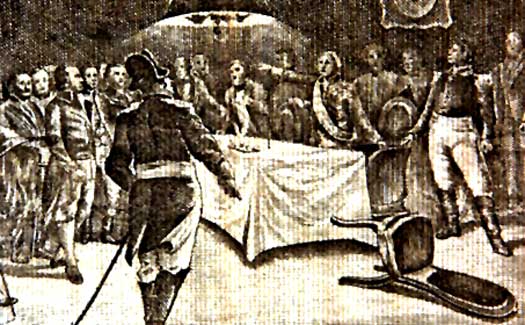 Thanks to France's occupation of Spain during the Napoleonic Wars, Spain's colonies in the Americas quickly took the opportunity to declare their independence Thanks to France's occupation of Spain during the Napoleonic Wars, Spain's colonies in the Americas quickly took the opportunity to declare their independence |
|
| Despite this and the subsequent British colonisation there, the newly-formed, and highly politically-unstable, United Provinces which replaces Rio de la Plata still claims the abandoned islands as part of the transfer of regional power from Spain. |
|
|
 |
|
|

 The Rio de la Plata (River Plate, or 'river of silver') was first colonised by Europeans in 1536 with the founding of the settlement of Buenos Aires following an unsuccessful exploratory visit in 1516
The Rio de la Plata (River Plate, or 'river of silver') was first colonised by Europeans in 1536 with the founding of the settlement of Buenos Aires following an unsuccessful exploratory visit in 1516 Asunción, the 'Mother of Cities', was founded in 1537, declaring independence from Spain in 1811 and honing its position as the gateway to the grassy Gran Chaco region
Asunción, the 'Mother of Cities', was founded in 1537, declaring independence from Spain in 1811 and honing its position as the gateway to the grassy Gran Chaco region The southernmost tip of both Argentina and Chile, Patagonia was first explored by Europeans in 1520, but witnessed little serious examination until the eighteenth century
The southernmost tip of both Argentina and Chile, Patagonia was first explored by Europeans in 1520, but witnessed little serious examination until the eighteenth century The Teatro Colón opera theatre in Buenos Aires first opened its doors in 1908, replacing an 1857 building, and has since been rated as one of the world's best opera houses
The Teatro Colón opera theatre in Buenos Aires first opened its doors in 1908, replacing an 1857 building, and has since been rated as one of the world's best opera houses Throughout the seventeenth century Spanish ships would face increasing perils on an ocean which they had almost owned in the early sixteenth century, especially from rival English and Portuguese vessels
Throughout the seventeenth century Spanish ships would face increasing perils on an ocean which they had almost owned in the early sixteenth century, especially from rival English and Portuguese vessels The native Charrúa people were depicted in 1843 by J C Prichard in the publication Histoire Naturelle de l'Homme: Comprenant des recherches sur L'influence des agens physiques et morau (Natural History of Man: Including research on the influence of physical and moral agents)
The native Charrúa people were depicted in 1843 by J C Prichard in the publication Histoire Naturelle de l'Homme: Comprenant des recherches sur L'influence des agens physiques et morau (Natural History of Man: Including research on the influence of physical and moral agents) Pedro Alvares Cabral found a rich and sometimes dangerous land which was ripe for colonisation - this would become the Portuguese imperial colony of Brazil
Pedro Alvares Cabral found a rich and sometimes dangerous land which was ripe for colonisation - this would become the Portuguese imperial colony of Brazil The War of the Spanish Succession was fought to avoid a shift in the balance of power in Europe with the proposed unification of the Bourbon kingdoms of Spain and France
The War of the Spanish Succession was fought to avoid a shift in the balance of power in Europe with the proposed unification of the Bourbon kingdoms of Spain and France The city of Montevideo was founded between 1724 and 1726 by Bruno Mauricio de Zabala, a port city by nature which faces the Río de la Plata and which today consists of tree covered avenues, quiet neighbourhood streets, and green squares and parks
The city of Montevideo was founded between 1724 and 1726 by Bruno Mauricio de Zabala, a port city by nature which faces the Río de la Plata and which today consists of tree covered avenues, quiet neighbourhood streets, and green squares and parks East Falkland was first settled by a short-lived Franco-Breton colony, but it was the British who populated the island in earnest, with the French Port Louis eventually being replaced as the capital by Stanley Harbour for its better anchorage
East Falkland was first settled by a short-lived Franco-Breton colony, but it was the British who populated the island in earnest, with the French Port Louis eventually being replaced as the capital by Stanley Harbour for its better anchorage
 Seen here in its mountainside setting are the ruins of Quilmes, home to the native tribe in the Tucumán region which was defeated by the Spanish in the seventeenth century
Seen here in its mountainside setting are the ruins of Quilmes, home to the native tribe in the Tucumán region which was defeated by the Spanish in the seventeenth century Britannia between Death and the Doctors shows an ailing Britannia being approached by Death in the guise of Napoleon, while her politicians squabble (LC-USZC4-8794)
Britannia between Death and the Doctors shows an ailing Britannia being approached by Death in the guise of Napoleon, while her politicians squabble (LC-USZC4-8794) Thanks to France's occupation of Spain during the Napoleonic Wars, Spain's colonies in the Americas quickly took the opportunity to declare their independence
Thanks to France's occupation of Spain during the Napoleonic Wars, Spain's colonies in the Americas quickly took the opportunity to declare their independence